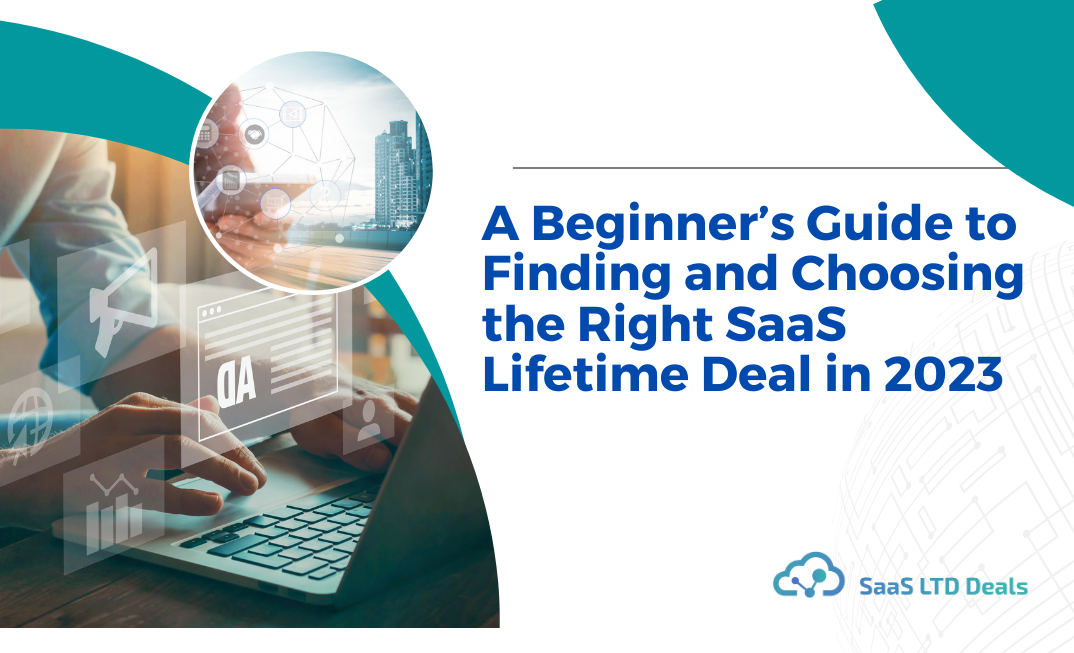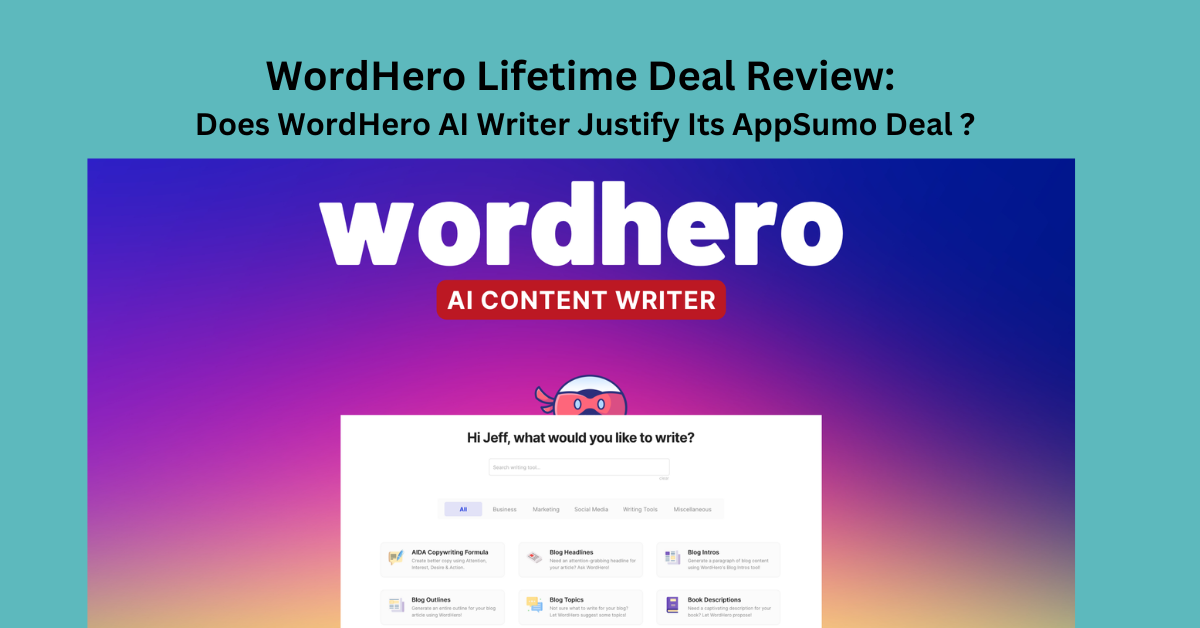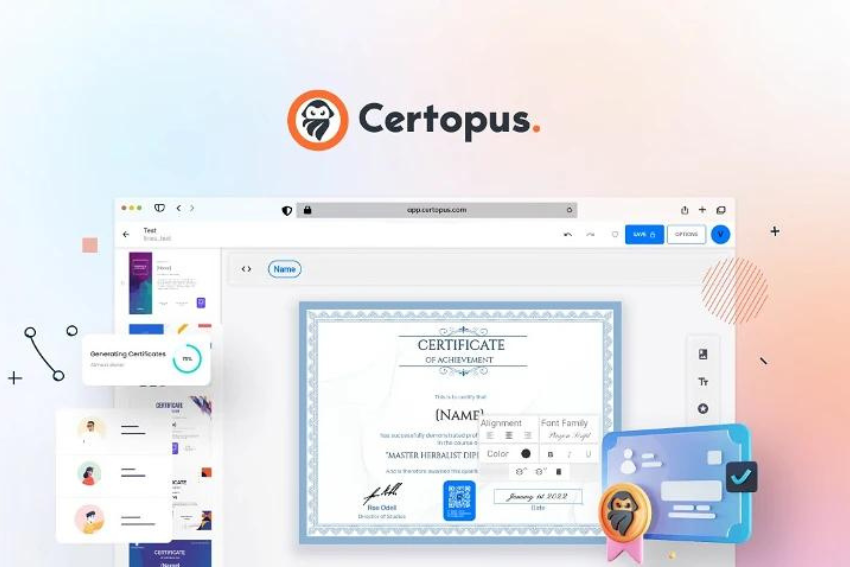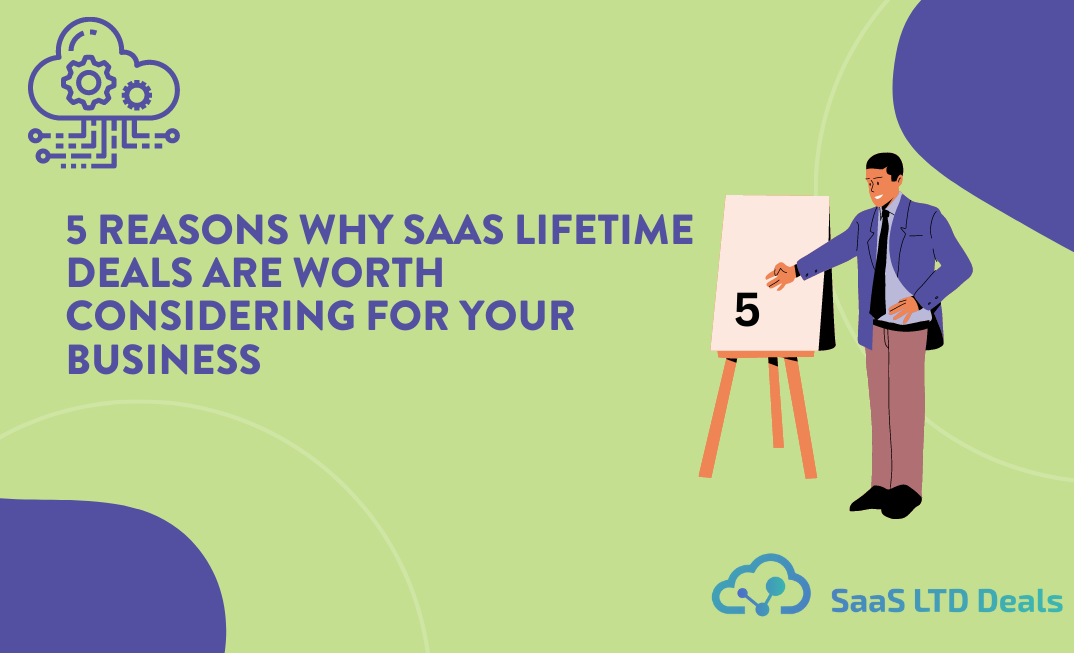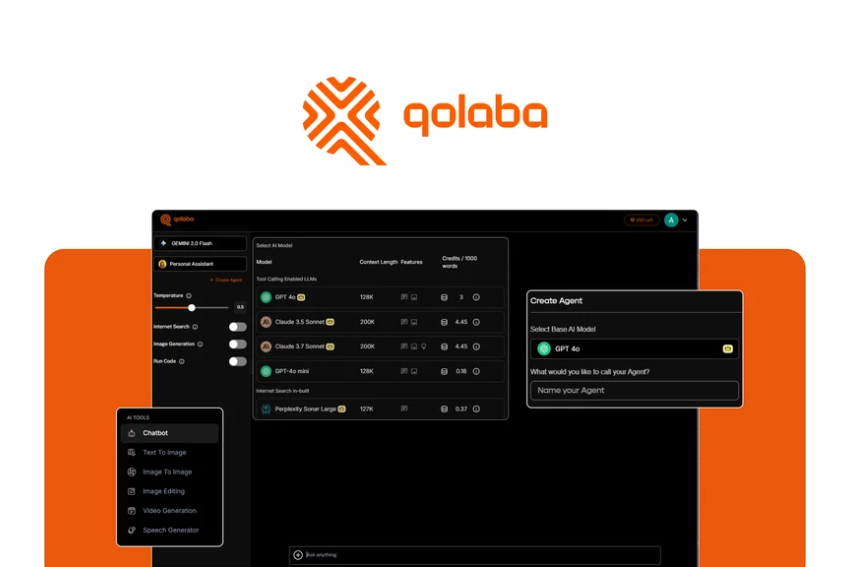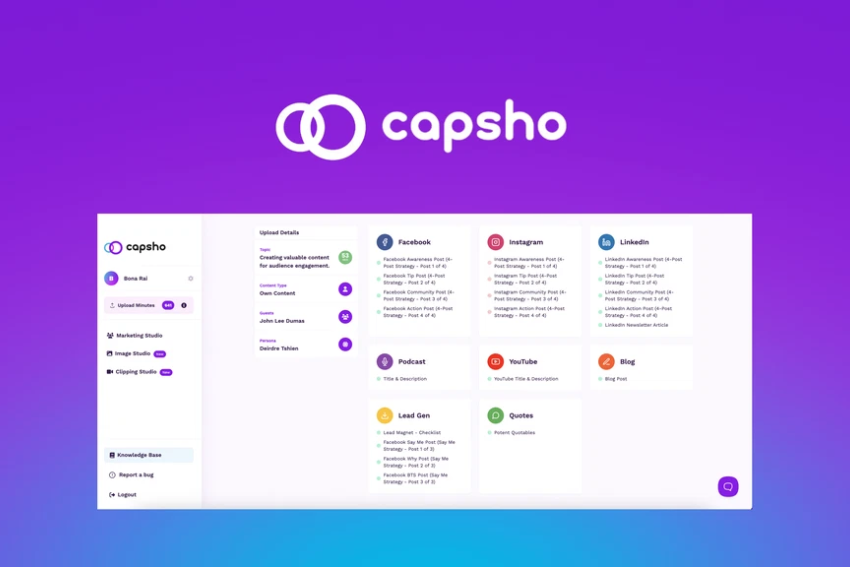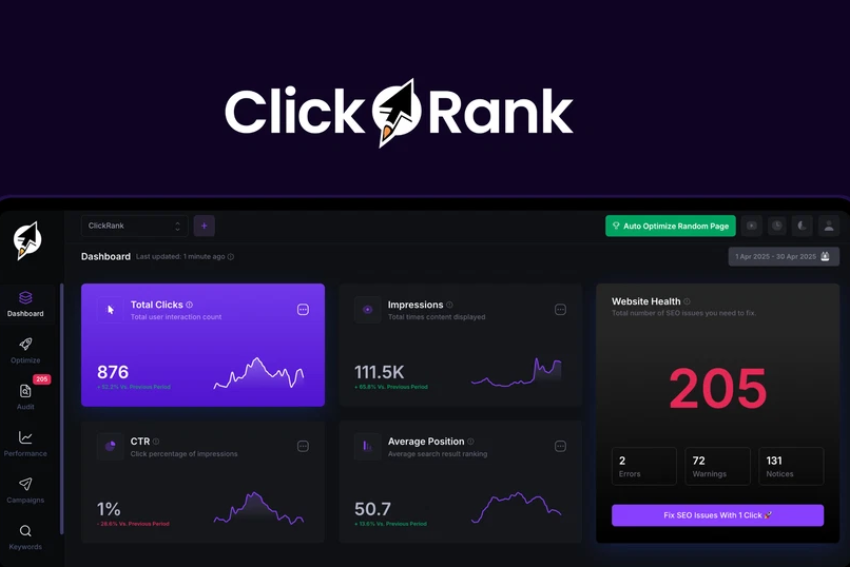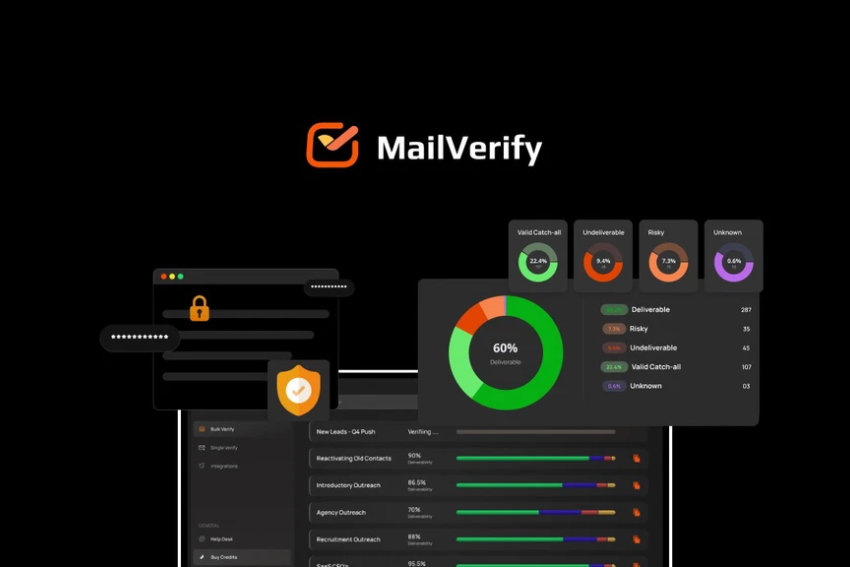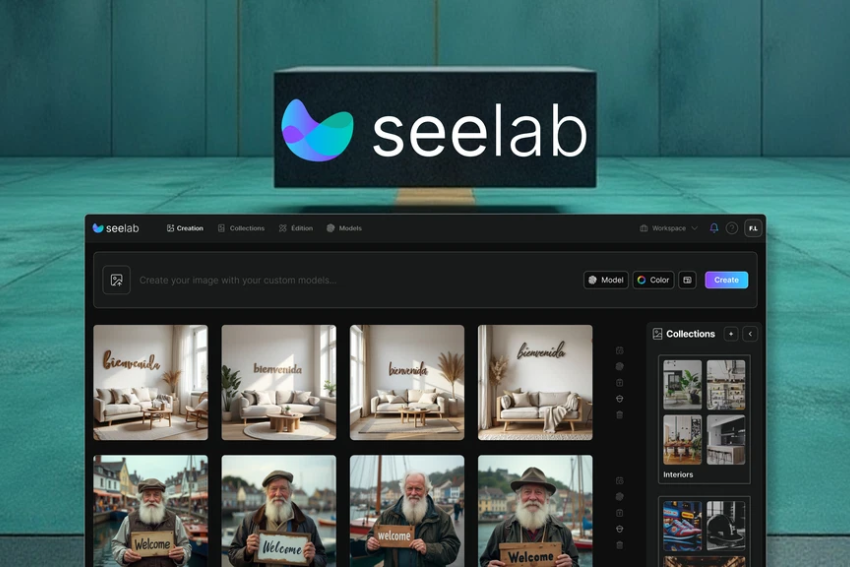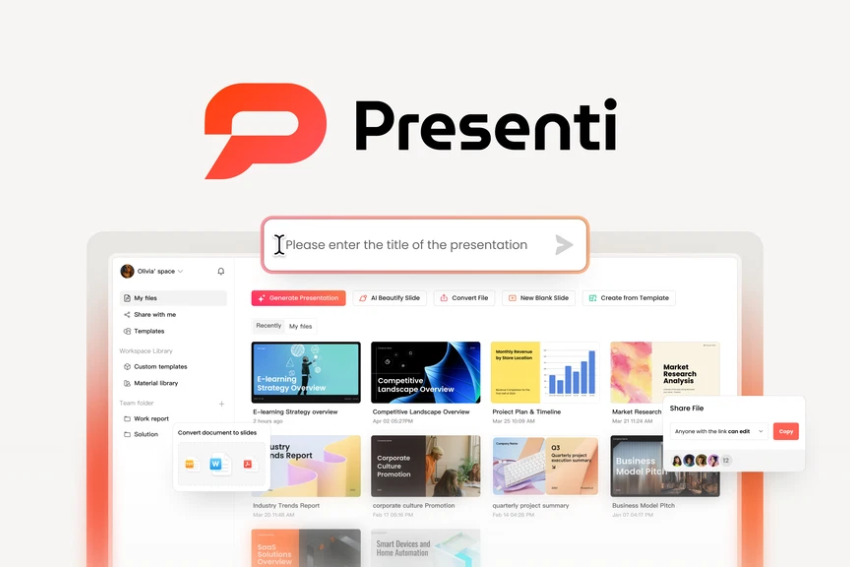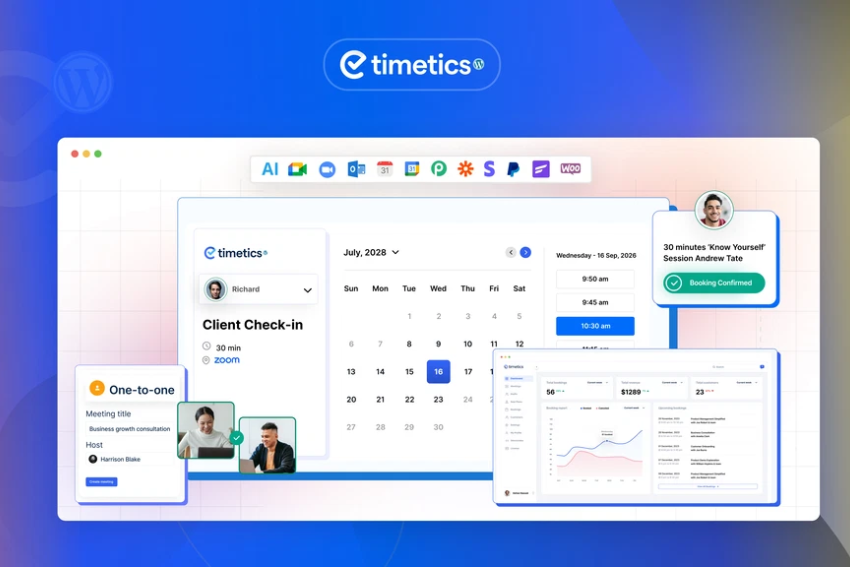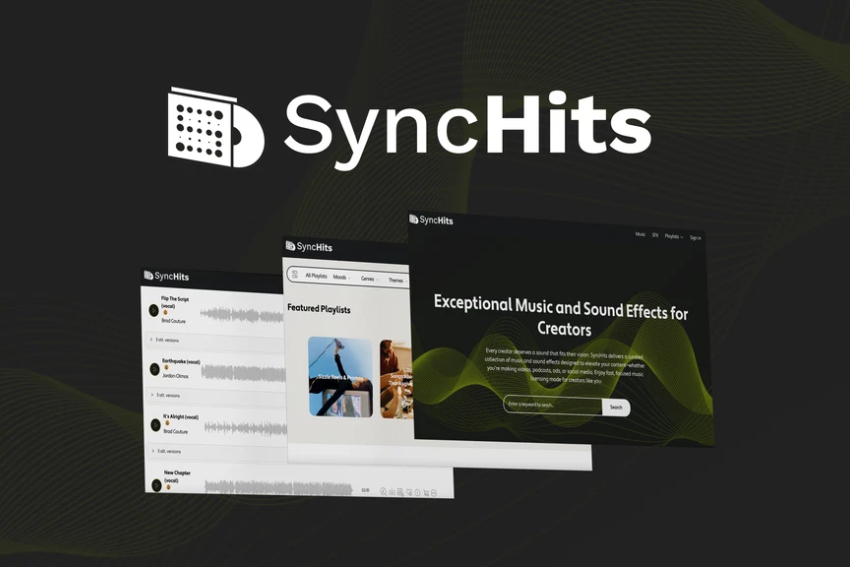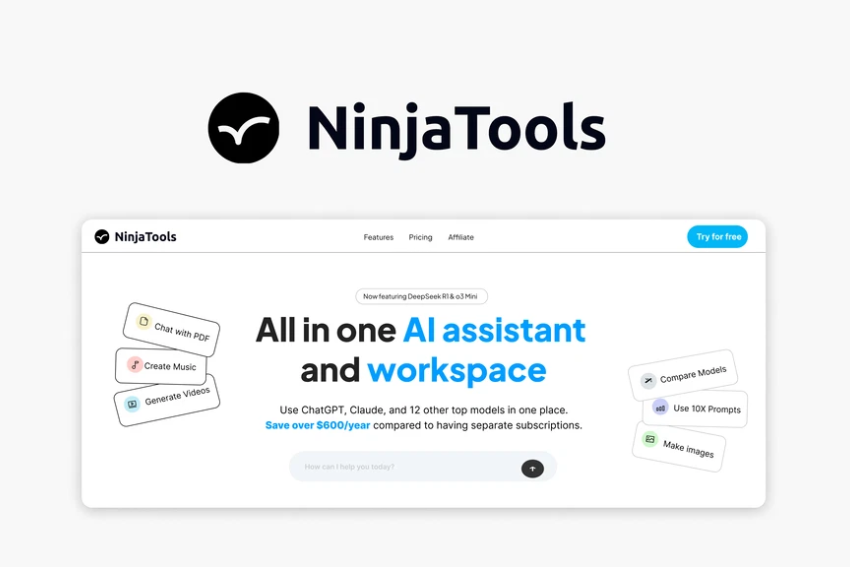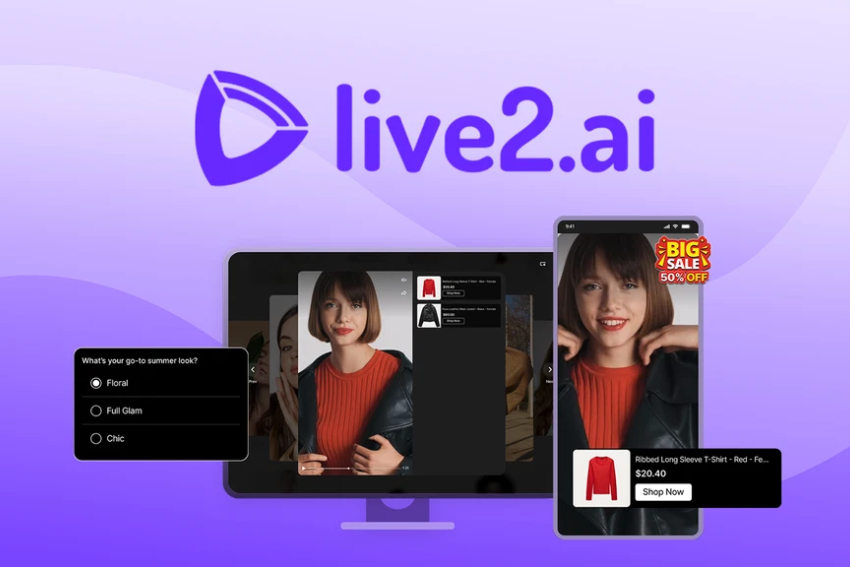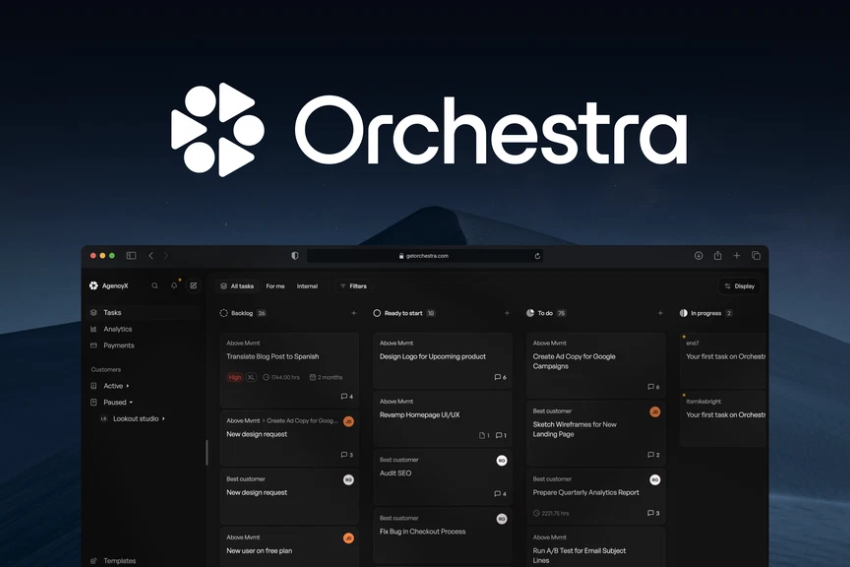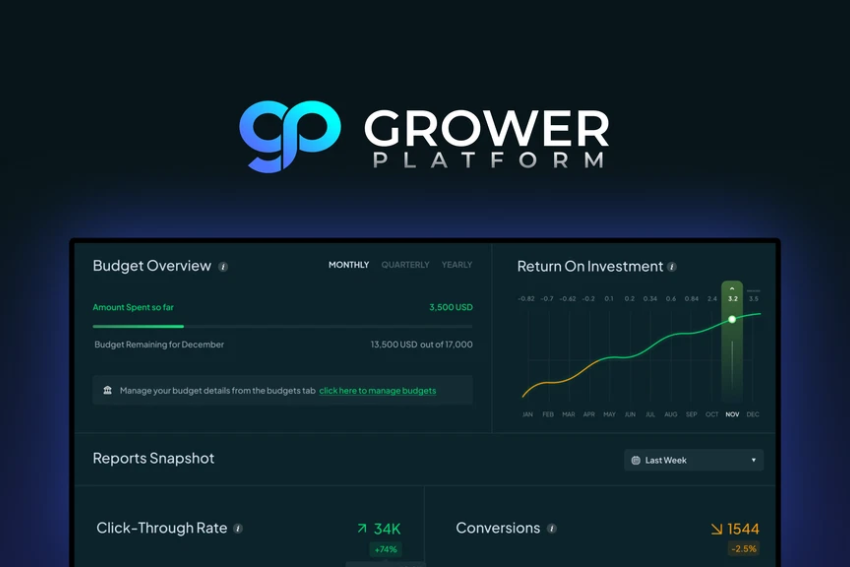If you’re new to the concept of SaaS lifetime deals, you might wonder how to find and choose the right one for your business.
Navigating the vast number of options out there can be daunting, but it doesn’t have to be. You can easily identify the best lifetime deal for your business needs with a few key tips. The key to choosing the right SaaS lifetime deal is to align it with your business goals and ensure it fits your budget and usage needs.
In this beginner’s guide, we’ll provide insight into the types of lifetime deals available, how to evaluate them, and how to choose the one that’s right for you. We’ll also guide you to the best places to find these deals.
Let’s dive right in!
What Are SaaS Lifetime Deals?
SaaS (Software as a Service) lifetime deals make software subscriptions much more affordable. In a nutshell, these deals are an agreement between users and vendors that offers software access for a one-time, flat fee.
The product is often offered at discounted prices, and the user pays only once for a lifetime license.
SaaS lifetime deals are becoming increasingly popular for businesses of all sizes. They are cost-effective in the long run and make it easier for smaller companies to access the software they need without breaking the bank.
How Do SaaS Lifetime Deals Work?
When you purchase a SaaS lifetime deal, you are essentially pre-purchasing the software for the product’s lifetime. In other words, you have unlimited access to the item for its lifespan.
This means you don’t have to worry about renewing it every year or paying for upgrades. The cost of the deal is typically much less than you would pay for a traditional license.
Some SaaS companies also offer additional benefits as part of the deal. also offers additional benefits as part of the deal. These can include access to new features, discounts on future purchases, and more.
It’s important to carefully read the fine print when evaluating these deals to make sure you’re getting the best value for your money.
What Are The Different Types Of SaaS Products?
The SaaS model has become the go-to choice for businesses looking to benefit from the power of the cloud. But with so many different types of SaaS products available, it can be difficult to know which one is right for your business. In this post, we’ll explore the various types of SaaS products and their advantages and disadvantages, so you can make an informed decision about which one is best for you.
1. Packaged SaaS
Packaged SaaS is a type of software-as-a-service (SaaS) that provides a complete solution in a pre-designed package. It includes all the necessary components of a full-fledged application, such as hosting, application development, maintenance, and support.
The main difference between packaged and custom SaaS solutions is that the former does not require any customization or additional coding. Hence, packaged SaaS products are ideal for businesses that don’t need to customize their applications.
It is cheaper than custom solutions, as well as faster to deploy. This is because the products are already designed with all the necessary features and are ready to use.
The most common types of packaged SaaS products include customer relationship management (CRM) software, enterprise resource planning (ERP) software, e-commerce solutions, email marketing solutions, and more. The only downside of these SaaS products would be that they may not offer the flexibility that custom solutions provide.
2. Technical SaaS
Technical SaaS products are gaining traction in the tech industry. These are a type of SaaS product specifically designed to help companies with their technical needs. They allow companies to save money, reduce risk, and increase efficiency.
Technical SaaS products are typically cloud-based and offer a variety of features. They can be used to create, manage, and store data and information, as well as process it.
They can also be used to track customer and employee data, manage customer relationships, and provide analytics. Technical SaaS products can also be used to monitor and control systems and networks, access remote resources, and provide security.
3. Collaborative SaaS
Collaborative SaaS is a type of SaaS product that enables users to collaborate in real time. These products can range from video conferencing and document-sharing applications to projecting management and workflow automation tools.
With Collaborative SaaS, users can access their projects and files from anywhere on any device, as long as they are connected to the internet. This eliminates the need for team members to be in the same physical location to collaborate.
It also allows for real-time collaboration and feedback, as well as the ability to store and access data securely in the cloud. This type of SaaS product is ideal for companies that have remote workers or teams spread around the world.
The most common Collaborative SaaS products are project management applications like Asana, JIRA, and Trello. These applications provide teams with the ability to organize tasks, prioritize projects, and track progress.
Other types of Collaborative SaaS products include customer relationship management (CRM) solutions and communication tools like Slack.
The main benefits of using a Collaborative SaaS product include the ability to access data from any device, the ability to collaborate in real-time, and the ability to store and access data securely in the cloud.
Factors To Consider When Choosing The Right SaaS Lifetime Deal
Choosing a lifetime SaaS deal requires thoughtful consideration of many factors. With a variety of options out there, it can be hard to decide which deal is right for you.
In this section, we explain the factors to take into account when selecting an ideal SaaS package.
1. Check Customer Reviews
Customer reviews can provide valuable insight into the quality of the provider’s services. Look for reviews that discuss customer service, the features they offer, and the overall level of satisfaction with their services.
Furthermore, do your research to ensure that the provider is reliable, secure, and has a good track record. Speak to other customers to get an understanding of the provider’s customer experience and the levels of support they offer.
You should also check the provider’s website to ensure that they are up to date with the latest technology and security protocols. Knowing that your provider is reliable, secure, and has a good reputation will give you peace of mind and ensure that your data is safe.
2. Determine Your Needs
What will the SaaS product do for you, and how will it benefit your business? You should ask yourself what problems you are trying to solve and if the product will help you do that.
The product should fit into your existing business processes and fill gaps that other systems didn’t. It should also be easy to use and understand.
Moreover, you should make sure that the product is compatible with your existing hardware and software, so you can quickly and easily integrate it into your existing system.
3. Examine The Features
It’s essential that you have access to the features you need to get the most out of your platform or software, so make sure that the features are not limited.
Take the time to look into the features that are included in the deal. A good way to do this is to read user reviews and check out the website of the SaaS provider to see what people are saying about the features.
This will help you get an idea of what features are available and how they work.
Don’t settle for a SaaS deal with limited features, as this may not be able to provide you with the capabilities you require.
4. Read The TOS
When selecting a lifetime SaaS deal, you should carefully review its terms and conditions. For such a deal, there are many factors to consider, such as the cost of the product, the period of usage, the support services, and the cancellation terms.
Some of the terms may include a termination clause, refund policy, and payment terms. If a user fails to abide by the terms and conditions, they may be subject to penalties or lose their access to the product.
In addition, it’s important to read the fine print to understand the company’s policies. This could include when the customer can access the product, any restrictions on usage, and the company’s right to modify or change the product.
It’s always a good idea to check the terms and conditions of any SaaS deal to ensure that the user is aware of all of the details. Doing this will help to ensure that the user understands all of their rights and responsibilities related to the deal and avoid any potential problems down the line.
5. Evaluate Customer Support
Customer support matters a lot when it comes to choosing a lifetime SaaS deal. Every customer will have different needs and wants, so having reliable customer service is a must.
Determine whether the customer service team is knowledgeable and responsive, as well as whether they are available around the clock.
You should also assess the quality of service they provide, as well as the time it takes them to respond to inquiries and solve problems. Check the company’s reviews to see if customers are satisfied with the support they receive and how quickly their issues were resolved.
Ask whether customer service is available over the phone, online chat, or email. Find out if the customer service team offers tutorials, walk-throughs, or other resources for new users.
6. Confirm Future Updates
While a lifetime SaaS deal may be attractive in terms of cost, it won’t mean anything if the product doesn’t receive regular updates. Updates are crucial because they keep an item up to date with the latest trends in the industry.
They can even provide new features that make the product more useful. Hence, without regular updates, a product can quickly become outdated, and you won’t get the most out of your deal.
If the product you want to buy isn’t going to get regular updates, it’s better to look for alternatives. You don’t want to invest in a product that will become obsolete in a short amount of time.
7. Ensure Ease Of Use
For a lifetime deal, ease of use should be a primary consideration. After all, if the product is challenging to use, there is no point in investing in it.
Spend some time studying the user interface and making sure it’s simple and intuitive. Check if the program has tutorials and user guides to assist you in getting started.
Assuming the software includes advanced features, learn how to use them before purchasing a lifetime license. If possible, try out the product’s free trial and become familiar with its user interface. That way, you can be confident that you understand how to use it.
8. Verify Data Security
Your data is a valuable asset, and you don’t want it to be compromised by an unreliable service. As such, it’s crucial to carefully evaluate the data security policies of any potential SaaS provider before making a purchase.
When considering a lifetime SaaS deal, make sure the provider utilizes the latest and most secure encryption technologies to protect your data. Moreover, inquire about their backup and disaster recovery policies to ensure they can quickly restore your data in the event of any technical issue.
You can also ask if they are compliant with any relevant regulations, such as the GDPR, to guarantee your data is being stored in accordance with applicable laws and standards.
Advantages of SaaS Lifetime Deals
As technology advances, thousands of companies are using Software as a Service (SaaS) solutions to improve their operations. They can be very beneficial to businesses that are looking to grow. In this chapter, we will explore the advantages of SaaS lifetime deals and how businesses can utilize them.
1. Low Upfront Costs
One of the most attractive advantages of a SaaS lifetime deal is its low upfront cost. Rather than having to pay a large sum upfront to access the product, you pay a one-time fee that is usually much lower than what you would pay for an annual subscription.
This makes it easier to purchase the product and access all of its features without having to spend too much right away.
2. Access To All Features
Another great advantage of a SaaS lifetime deal is that you get lifetime access to everything the product has to offer. This is beneficial to businesses that require access to a wide range of features.
With most SaaS lifetime deals, you don’t have to pay extra for additional features. Instead, you have access to everything you need from the start.
3. Easy To Cancel Or Refund
Unlike many subscription-based products, lifetime deals are easy to cancel or refund.
If you are unsatisfied with the product or service, you can cancel your SaaS lifetime deal and get a refund for the amount that you paid. As a result, you can try out a product without committing to it for a long period of time.
4. No Vendor Lock-In
Another significant advantage of a SaaS lifetime deal is that there is no vendor lock-in. This means that you are not stuck with a particular vendor and can choose to move to a different vendor if you want.
5. Risk Reduction
Additionally, with a SaaS lifetime deal, businesses can reduce their risk exposure. These deals often guarantee long-term access to a variety of features, such as analytics and automation.
Such features can be extremely useful for businesses that want to track their progress and make sure their campaigns are running smoothly.
Moreover, with the right metrics and analytics in place, businesses can evaluate the success of their campaigns and newsletters, making it easier to spot areas of improvement.
Disadvantages of SaaS Lifetime Deals
For any business, investing in the right technology is critical for success. With the rise of SaaS lifetime deals, it seems like a great option to get the technology and tools you need without breaking the bank. But are there any potential disadvantages of SaaS lifetime deals? While there are some advantages to this type of purchase, it’s essential to consider the potential downsides before committing to a long-term purchase.
1. Limited Viability
A big disadvantage of a SaaS deal is that the software vendor may not be financially viable for the long term. If the vendor goes out of business or experiences financial difficulties, you may not receive the same level of support or updates as you would with a traditional subscription.
When you rely on software for critical business functions, you are taking a huge risk.
2. Restricted Usage
Some SaaS lifetime deals may be limited in terms of the number of devices on which the software can be used.
For example, you may not be able to use it on more than 2-3 devices. This can be a problem if you need to use the software across multiple devices or if you need to access it from multiple locations.
3. Lack Of Integration
Lifetime deals may not offer the same level of integration as traditional subscriptions in some cases. It can be problematic if you need to utilize other platforms or software, and the integration prevents you from doing so.
4. Absence Of Updates
With a SaaS lifetime deal, you may not be able to receive updates as they become available. Keeping up with the latest trends and technologies in the industry will be difficult without constant updates.
Where To Find SaaS Lifetime Deals?
Here are some reliable sources for SaaS lifetime deals.
1. AppSumo
AppSumo is perhaps your best resource for finding SaaS lifetime deals. You can search the AppSumo marketplace by product category, type of deal, and even price range.
The platform also features a “What’s hot” section, which displays the most popular SaaS products.
You can subscribe to AppSumo’s “Stay in the know” feature to be notified when a certain lifetime deal comes back. This way, you’ll never miss out on great deals.
Furthermore, AppSumo offers exclusive discounts and freebies to members, which makes it even more valuable.
The platform also has a blog that offers helpful information about SaaS products. This blog often covers topics such as choosing the right SaaS solution for your business, optimizing your SaaS investments, and identifying SaaS providers.
This keeps you up to date with the latest SaaS trends and helps you maximize your investment.
2. Dealify
Dealify is another platform that allows you to find the best deals on the web. It features a Spotlight Deals section that showcases top deals selected by Dealify’s team of experts.
They also have a category called The Top Deals This Month. It highlights the best deals and discounts on SaaS products for a particular month. This includes exclusive offers, limited-time discounts, and more.
Overall, Dealify is a good resource for finding SaaS lifetime deals and discounted software products. Its vast selection of products and a 30-day money-back guarantee make it a reliable and convenient option for businesses looking to save on software costs.
By visiting the website, you can access the full range of products and deals offered by Dealify and find the right software solution for your business needs.
3. Pitchground
At PitchGround, you can find an array of SaaS lifetime deals from a wide variety of software providers. Whether you are looking for productivity tools, communication platforms, or digital marketing solutions, you are sure to find one that meets your needs.
The best part is you can filter through the deals to find the best fit for your business. You can narrow down your selection by category, pricing, and features. This makes it easy to find the right SaaS lifetime deal for your business.
Conclusion
By following the steps outlined above, you can make sure that you find and choose the right SaaS lifetime deal for you. The process simply involves researching what is the best SaaS for your needs, identifying the key terms of a lifetime deal, and analyzing its potential ROI.
Last but not least, you can make an educated choice and choose an appropriate SaaS lifetime deal if you understand the SaaS industry, research, and compare the available SaaS tools.


